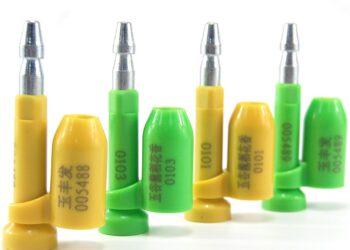In an increasingly globalized world, the movement of goods and cargo across international borders has become an integral part of our everyday lives. The safe and secure transportation of these goods is of paramount importance to businesses and economies alike. To address this crucial aspect of global trade, the International Organization for Standardization (ISO) introduced ISO 17712:2013, a standard that outlines requirements for mechanical seals used on containers for international shipping. This standard plays a pivotal role in ensuring the protection and security of freight during transit.
ISO 17712:2013 sets forth stringent guidelines for the design, manufacturing, and testing of mechanical seals, commonly referred to as container seals or bolt seals, which are used to secure shipping containers. These seals serve as a critical line of defense against tampering, theft, and unauthorized access to cargo.
The standard classifies seals into three main categories based on their level of security and testing:
- Indicative Seals (I-seals): These seals provide evidence of tampering through visual inspection. They are typically made of plastic or thin metal and are designed to show clear signs of tampering, such as a broken seal or visible damage.
- Security Seals (S-seals): S-seals are more robust and offer a higher level of security. They are constructed with stronger materials, such as metal or hardened plastic, and are designed to withstand more sophisticated tampering attempts. Security seals often require specialized tools for removal.
- High-Security Seals (H-seals): H-seals are the most robust and tamper-resistant. They are constructed with heavy-duty materials and advanced locking mechanisms, making them extremely difficult to tamper with. H-seals are typically used for high-value or high-risk shipments.
The science behind ISO 17712:2013 testing services revolves around ensuring the seals’ effectiveness in safeguarding cargo. Manufacturers of these seals are required to undergo rigorous testing to meet the standard’s specifications. Some of the key testing procedures include:
- Strength and Durability Testing: Seals are subjected to tests that simulate real-world conditions, such as extreme temperatures, humidity, and physical stress. This ensures that the seals remain intact and functional throughout the shipping journey.
- Tamper Resistance Testing: Manufacturers must demonstrate that their seals are resistant to various tampering techniques, including cutting, picking, and prying. The seals should show clear evidence of tampering if such attempts are made.
- Chemical Resistance Testing: Seals are tested to ensure they can withstand exposure to chemicals, which is crucial for shipments that may come into contact with hazardous substances.
- Compatibility with Container Surfaces: Seals must be compatible with different types of container surfaces to ensure a secure fit. Improperly fitting seals can be easier to tamper with.
- Barcoding and Marking: Many seals come with unique markings or barcodes for tracking and identification. The readability and durability of these markings are tested to ensure accurate tracking throughout the supply chain.
By adhering to the standards set forth in ISO 17712:2013, manufacturers and stakeholders in the logistics and shipping industry can enhance the security of their cargo and minimize the risk of theft, tampering, and unauthorized access. Compliance with these standards also streamlines international trade by promoting consistency and trust in the handling of shipments.
Conclusion:
ISO 17712:2013 testing services play a pivotal role in the science behind freight protection by ensuring the integrity and security of container seals used in international shipping. The standard’s rigorous testing procedures and classifications enable manufacturers to produce seals that withstand tampering and harsh environmental conditions. As a result, businesses can confidently transport their goods across borders, knowing that their cargo is well-protected and secure throughout its journey. This standard not only safeguards individual shipments but also contributes to the overall efficiency and reliability of the global supply chain.











